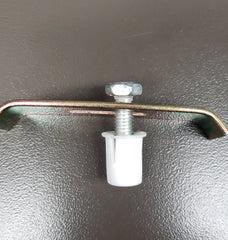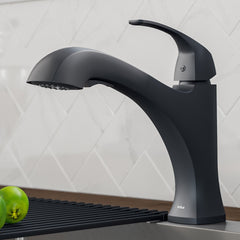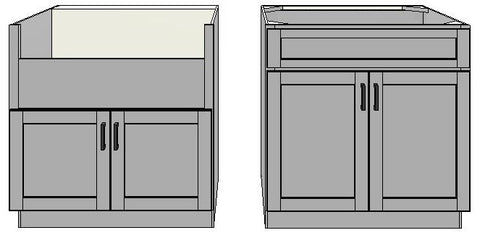Determining which Kitchen Sink Size will fit your base cabinet sounds easier than it actually is.
If you need the short answer here it is: The sink needs to be 3″ smaller than the sink base cabinet. If you want to know why, keep reading. The information below will be a fairly in depth, touching on aspects of installation and fitment.
You are watching: How to Measure for a Kitchen Sink, Explained
Let’s first cover the elements involved in the fitment of a sink into a cabinet.
First: Sink Base Sizing
Sink Bases, and most base cabinets, typically measure 24″ front to back and in inch intervals in the left to right size. In other words, its exterior size. A common starting kitchen sink size for a cabinet base is the infamous 24″ cabinet. I am calling it infamous because finding the biggest sink for the 24 inch cabinet is one of the most often asked question (Here is a blog dedicated to it)
Next is a 27″ cabinet, then 30″, 33″, and 36″ cabinet. They do get larger, but this is less frequent. Why are there so many sizes? It all depends on the kitchen space, the kitchen sink sizes, needs of the client, needs of the design, and budget of the renovation.
For example, if you have a 135″ wall to fill with sink base cabinets. You might have the following from left to right: 36″ Drawer Base, 30″ Base, 27″ Sink Base. 18″ double pull out trash, 24″ Drawer Base.
The 27″ will allow you to put a sink like this inside: Kraus 25″
What if this does not make you happy, and you want a larger kitchen sink size like this: 27 “Kraus Workstation. You need to gain three inches in your sink base to accommodate the increase in sink size. To gain that space, you will have to sacrifice 3″ from another cabinet. Your 18″ double trash could become a 15″ single, or you might swap the 36″ drawer base for a 33”. Regardless, cabinet layout can change.
Next: Sink Sizing for Undermount Sinks
This is where it gets more confusing.
All kitchen sinks are described, and essentially titled, by their overall size; just like the sink base cabinets they go into. Therefore, when shopping for a sink for your specific undermount sink structure, searching for the measurement first can be detrimental to finding exactly what you need.
A 27″ sink is one that is 27″ left to right at the mounting flanges. The basin itself is 25″ Generally speaking for under mount sinks, the basin will be 2″ smaller than its described size. For example, a common 23″ sink will also measure 18″ front to back. The bowl will be approximately 21″ x 16″. Check this model out: Nantucket 23″
Stay with me – It is all going to come together and make sense. I promise.
Next: Fitting the correct Kitchen Sink Size to the Cabinet
Sink manufacturers will always recommend a cabinet that is a full 3″ larger than the sink. Why? There’s actually a few reasons:
1. Going back to the first section, cabinet size is the overall left to right. However, the sink is going inside the cabinet walls, so we need to accommodate to wall thickness. Typically, the cabinet walls will be 3/4″, so a 24″ sink base cabinet will have 22.5″ inside.
2. Mounting Clips – These are needed to secure the sink directly to the countertop. Every undermount kitchen sink we offer comes in many different sizes so you have all the correct equipment and tools to mount your new sink/cabinet properly. The clips have a few components: The anchor, clip, and screw. The anchor is drilled into the underside of the countertop. It is the receiving side of the screw. Once the anchors are secured the sink is held in place from its flange tight to the underside of the countertop. These clips are the reason why a lot of sink companies like to choose 3″ smaller than the cabinet. They want room for clips on the right and left side.
Read more : 6 Popular Types Of Kitchen Layouts
Direct Sinks likes to challenge this concept: Why can’t the clips be mounted on the front and back of the sink flanges?
 Standard Sink Clips
Standard Sink Clips
Standard Sink Clips aren’t necessarily the answer. We often will push all these limits for sink fitment. The normal recommendation from sink manufacturers is a “catch all” and designed to cover all the various methods of installing a sink into a countertop for a sink base cabinet. We are located in NY. We carry counter tops and kitchen sinks in various sizes because we know everyone’s kitchen is designed differently. The west coast will install differently compared to the southeast. We have learned that some fabrication shops will follow the recommendation without wavering. Some fabricators will lightly modify the cabinet walls to squeeze a larger than recommended sink in the cabinet.
Why such variation? Not sure, but I heard that following the three-inch rule gives the client and fabricator the ability to remove the sink after install, if need be.
Last note about sink clips – for all kitchen sink sizes, USE THEM. We often get contacted about information on how to re-mount a sink that fell into the cabinet from the countertop. This happens when the clips are not used, and the sink is glued in with silicone. The worst part of that situation is that this will tend to happen when the sink is the heaviest; like when it is filled with water.
What about allowing space for my faucet? How much room do I need to mount the faucet?
As mentioned before, the standard sink base cabinet is 24″ deep. With countertop installed; your finished kitchen sink bases’ size will typically be 25″
Faucet hole requirements are 1 3/8″ – 1 1/2″. The faucet body will be about 2″. (Sometimes more)
A sink that is 18″ at the flange front to back, will leave about 5″ inside the cabinet (Accounting for front and rear cabinet wall thickness). Normally the fabricator will mount the sink toward the front of the cabinet. Under most circumstances, you have plenty of room to mount a faucet. Some of the kitchen sink sizes at Direct Sinks, like this model, are even larger at 19″.
Keep in mind, if you have a window ledge behind the sink, the ledge may impact the space available. The window ledge may project toward you. When pushing the limit of sink sizing, if you have a window ledge projection to account for, you will most likely be forced to select a faucet with either a “Forward Only” handle movement, or a faucet with a center handle control at the top that will fit with your kitchen sink sizes for your sink base cabinet. Now if you select a single handle faucet you need to account for the front to back movement of the temperature control. Ideally, even without the possible window ledge it is ergonomically beneficial to have a temperature control that is “forward only”. Take a look at the images.

Single Hole Faucet with a centered handle | Kraus KPF-2252
Forward only handle – Saves space with less reaching
Faucet for tight spaces
Single Hole Faucet with a centered handle | Kraus KPF-2252
Forward only handle – Saves space with less reaching
Read more : What To Do With Space Behind Corner Kitchen Sink
What about measuring a cabinet for an Apron Front or Farm Sink?
We follow the same 3″ kitchen sink size rule. The sink should be 3″ smaller than the cabinet; a 33″ apron sink needs a 36″ sink base. A 30” apron sink needs a 33″ cabinet.
Regarding apron sinks, there are other elements that can allow you to push past this restriction. Conversely, there are elements that may force you to adhere to it. Allow me to explain further.
Apron Sinks require a different sink base cabinet compared to a standard undermount sink. Furthermore, installing an apron kitchen sink according to size, and a countertop is also different.
Take a look at these two cabinets:

Country Sink Base vs Standard
The cabinet on the left is made for an apron sink. This is called a country sinkable cabinet. Note the shorter doors. The space taken from the height of the doors is given to the space occupied by the height of the apron sink face,
The cabinet on the right is a standard sink base. Note the taller doors and panel at the top, known as a false drawer front.
The absolute largest kitchen sink size you can put in a cabinet for an apron sink is the same size as the cabinet if and only if, several different factors are met. This max size of sink to a cabinet is known as “Stacking”. The sink is stacked on the sink base cabinet, and sitting on the walls, (along with additional supports) These are rarely met, and this is why the 3″ rule is important.
These determining factors are:
- The placement of the cabinet in relationship to the dishwasher.
- Material of the sink. For example, fireclay kitchen sink sizes can be marginally larger or smaller than the intended size. This is a direct result of how fireclay sinks are made. Stainless sinks are more exact and consistent.
What cabinets are actually next to the sink base?
The ultimate determining factor will be on the person installing it. If your installer or kitchen designer has the kitchen laid out where you can stack the apron sink on the cabinet, then you are in luck. If this is what you really want to achieve, make sure your cabinet installer and designer knows this before they design everything. Note- Depending on the kitchen sink size, they may not be able to do this easily. Also keep in mind that the sink base cabinet may need to be flanked by columns, fillers, or something else just so you can stack the sink. This will equate to higher costs to you, but if its the look you want, you want what you want. Right?
What if you want an apron sink in a standard sink base?
You are in luck! This transition from having an undermount kitchen sink size to an apron sink is when you are keeping the cabinets you have and are getting new counter tops. The type of sinks these are called are “Retrofit Apron Front” sinks. With these sinks, the apron is a reduced height and is made to fit over the space occupied by the false drawer front. These sinks still follow the 3″ rule but do have different apron heights to work with different cabinet construction and false drawer height.
How do you measure a sink for a corner sink base?
– This pertains to the common 36″ corner kitchen sink base sizes
The easy answer is that it is treated like a 24″ sink base cabinet. If a 21″ sink is in the corner sink base, all mounting flanges are easily accessible. You can also normally easily use a 23″ sink as well. Check out this page for more detail: Corner Base Sinks.
Source: https://gardencourte.com
Categories: Kitchens
